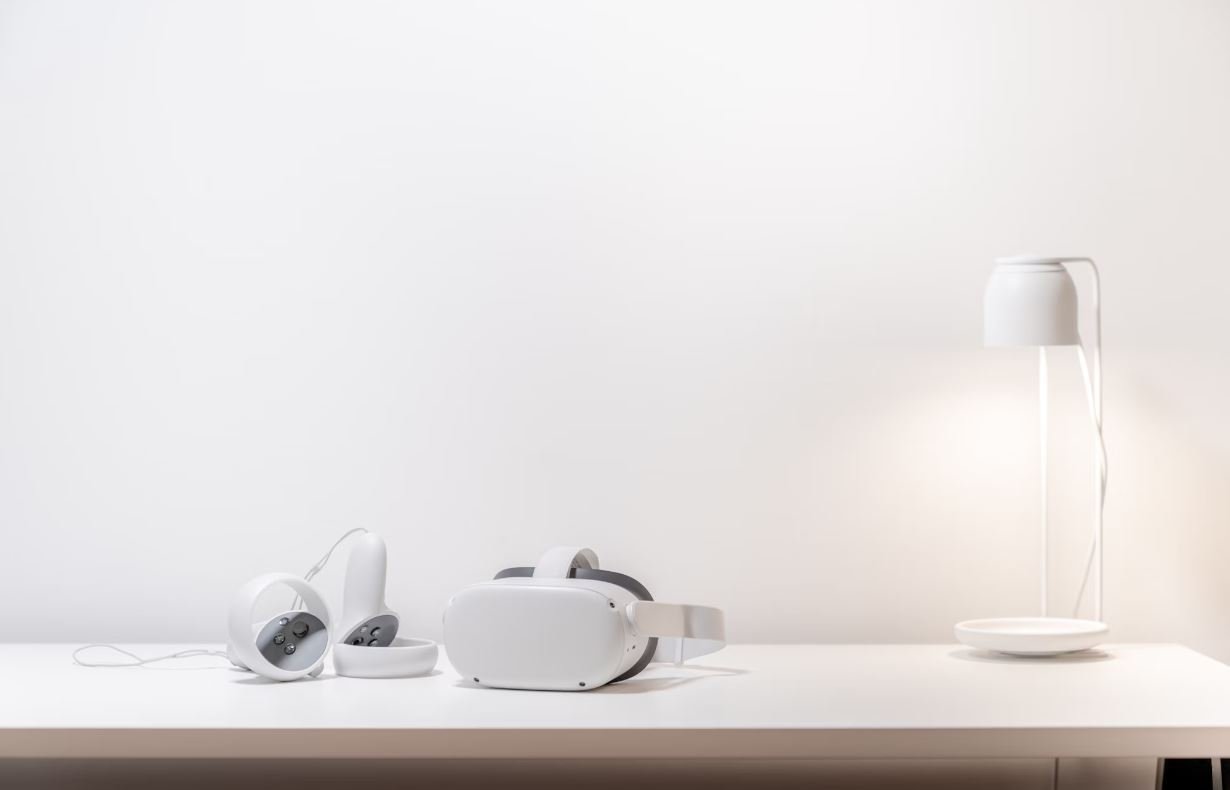How Movie Sounds Are Made
The art of creating sound effects for movies is a fascinating process that often goes unnoticed by the average viewer. From the sound of footsteps on different surfaces to the intense roar of explosions, sound designers play a crucial role in enhancing the overall cinematic experience. This article explores the techniques and tools used in the creation of movie sounds, giving you a behind-the-scenes look at this captivating aspect of film production.
Key Takeaways
- Movie sound effects are created through a combination of recorded sounds, manipulation, and foley.
- Sound designers use various tools, such as synthesizers and sampling libraries, to create and modify sounds.
- Foley artists recreate everyday sounds in a studio environment to bring authenticity to the on-screen action.
Sound designers rely on a variety of techniques and tools to create captivating and realistic sounds for movies. One of the main methods is using recorded sounds, either captured on location or in a controlled studio environment. These sounds serve as the foundation for creating unique and immersive auditory experiences. *With the advancement in technology, virtual reality has opened up exciting possibilities for sound designers to create more immersive and interactive soundscapes.
In addition to recorded sounds, sound designers often manipulate and process these sounds using digital audio workstations (DAWs) and specialized software. This allows them to modify and enhance the characteristics of the original recordings, adding depth, intensity, or any desired quality. *By manipulating the pitch and speed of a sound, a simple sound effect can be completely transformed into something unrecognizable yet compelling.
| Sound Design Techniques | Description |
|---|---|
| Layering | Combining multiple sounds to create a richer and more complex auditory experience. |
| Pitch Shifting | Altering the pitch of a sound to create a different emotional impact or to match a specific visual element. |
| Reverb and Delay | Adding spatial depth and creating an illusion of distance by adjusting the amount of reverb and delay applied to sounds. |
Another important aspect of movie sound design is foley. Foley artists re-record the sounds of specific actions and movements that are difficult to capture during filming, such as footsteps, cloth movements, or body impacts. These sounds are recreated in a studio using various objects and materials meticulously chosen to approximate the desired sounds. *It’s fascinating to see how everyday objects like cornstarch or drinking glasses can be used to create sounds you would never expect.
The use of precise timing and synchronization is crucial in sound design, especially when it comes to aligning sound effects with the visual elements of a movie. Sound designers meticulously analyze the footage to ensure sounds sync perfectly with the actors’ movements, the impact of objects, or the rhythm of the narrative. *Achieving perfect synchronization creates a seamless audiovisual experience that enhances the viewer’s immersion in the film.
The Role of Sound Designers
- Creating immersive and realistic soundscapes that enhance the viewer’s emotional engagement with the film.
- Enhancing storytelling by utilizing sound to emphasize important moments and underscore the narrative.
- Capturing and manipulating sounds to evoke specific emotions or responses in the audience.
In conclusion, movie sound design is an intricate and creative process that plays a vital role in the overall cinematic experience. By combining recorded sounds, manipulation techniques, and the art of foley, sound designers bring life to on-screen action and transport viewers into the world of the movie. So, next time you watch a film, pay attention to the carefully crafted sounds that add depth and nuance to the visual storytelling.

Common Misconceptions
1. Movie sounds are completely artificial
One common misconception people have about movie sounds is that they are entirely computer-generated or recorded in a studio. However, this is not always the case.
- Many movie sounds are actually recorded live on set, such as the sounds of footsteps, doors opening, or car engines revving.
- Mixing sounds from different sources and adding effects during post-production enhances the overall sound experience.
- Sometimes, real objects or materials are used in unconventional ways to create certain sounds, such as using a rubber glove for the sound of a monster’s growl.
2. Only professional sound designers can create movie sounds
Another misconception is that only skilled sound designers can create the intricate sounds we hear in movies. While professionals certainly play a major role, there is more to movie sounds than meets the eye.
- Many movie sound effects can be created by anyone using simple techniques, such as recording household items or using audio editing software.
- Online libraries and communities provide resources and tutorials for aspiring sound designers, making it easier than ever to get started in the field.
- Collaboration between different members of the movie production team, including directors and editors, also influences the creation of movie sounds.
3. Movie sounds are always realistic
Some people believe that every sound in a movie is meant to replicate reality accurately. While creating realism is often the goal, movie sounds are not always purely realistic.
- Many sounds are enhanced or exaggerated to heighten the emotions or intensity of a scene, such as the dramatic thud of a punch in an action movie or the eerie whisper in a horror film.
- Artistic interpretation of sounds allows filmmakers to create unique and memorable auditory experiences that go beyond what our ears encounter in daily life.
- Audio professionals often use a combination of real sounds, foley effects, and digital manipulation to achieve the desired impact.
4. Movie sounds are standardized across all films
Contrary to popular belief, there is no one-size-fits-all approach to movie sound production. The sounds used in films vary greatly depending on the genre, style, and intended atmosphere.
- Different genres require different sound techniques, for example, an action movie will often emphasize loud and impactful sounds, while a romantic comedy might focus more on dialogue and subtle background sounds.
- Each film has its own unique sound design, carefully crafted to match the story, characters, and overall cinematic experience.
- Successful sound design contributes to the storytelling process, so no two movies will have the exact same soundscapes.
5. Movie sounds are static and unchanging
Many people assume that once the sounds for a movie are recorded and edited, they remain fixed throughout the entire film. However, movie sounds are dynamic and can change in subtle or significant ways.
- Sound mixing and engineering play a crucial role in creating a rich audio experience by adjusting the levels, panning, and spatial effects of different sounds throughout the movie.
- Soundtracks and ambient sounds are integrated with precision to enhance specific moments or create a sense of continuity.
- The use of sound design in conjunction with visual effects further enriches the cinematic experience, adding depth and dimension to on-screen action.

Introduction
Sound is an integral part of the movie-watching experience, enhancing emotions and creating immersive environments. Have you ever wondered how movie sound effects are created? This article explores the fascinating world of movie sound design and the techniques used to craft the sounds you hear on the big screen. Below are ten captivating tables that provide insight into various aspects of movie sound creation.
The Role of Foley Artists
Foley artists play a crucial role in creating sound effects for movies. Their expertise lies in recreating everyday sounds to match the actions portrayed on screen. The following table highlights some of the unique tools and materials utilized by Foley artists to achieve realistic sound effects.
| Foley Tools | Materials |
|---|---|
| Footsteps | Various shoes on different surfaces |
| Doors | Wood, metal, hinges |
| Clothing | Leather, fabrics |
| Chimes | Metal objects |
Common Sound Effects in Movies
Movie sound design often involves using familiar sounds to emphasize or enhance specific actions or scenes. The subsequent table showcases some common sound effects and their frequent usage in films.
| Sound Effect | Usage |
|---|---|
| Explosion | Action scenes, destruction |
| Gunshot | Pursuit, danger |
| Heartbeat | Tense moments, fear |
| Screeching tires | Car chases, accidents |
The Art of Sound Mixing
Sound mixing is the process of creating the final soundtrack for a movie by blending dialogue, music, and sound effects. This table outlines the various elements that sound mixers manipulate to achieve the desired audience experience.
| Sound Elements | Adjustments |
|---|---|
| Dialogue | Volume, EQ, panning |
| Music | Volume, balance with dialogue |
| Sound effects | Level, placement in the mix |
| Ambience | Atmospheric sounds, background noise |
Creating Unforgettable Scores
Movie scores have the power to evoke emotions and significantly impact the viewer’s experience. The following table sheds light on the instruments commonly used in film scoring and their traditional emotional associations.
| Instruments | Emotional Associations |
|---|---|
| Violins | Tension, romance |
| Piano | Serenity, melancholy |
| Brass | Drama, power |
| Percussion | Action, intensity |
Exploring Surround Sound Formats
The utilization of surround sound formats enhances the immersive nature of movie soundtracks. The subsequent table showcases some commonly used surround sound systems and their capabilities.
| Surround Format | Capabilities |
|---|---|
| Dolby Digital | 5.1 channels, discrete audio |
| DTS:X | Object-based audio, height channels |
| Auro-3D | 9.1 channels, 3D sound |
| IMAX | Massive speaker arrays, enhanced dynamics |
The Influence of Silence
Contrary to popular belief, silence can be a powerful tool in movie sound design. The subsequent table delves into some notable instances where silence is effectively utilized.
| Film | Scene Description |
|---|---|
| No Country for Old Men | Tense coin toss scene |
| The Dark Knight | Joker’s hospital interrogation |
| Interstellar | Space scenes for a sense of vastness |
| Drive | Suspenseful car chase sequences |
Recording Realistic Dialogue
To capture authentic dialogue, sound designers employ various recording techniques. The subsequent table details different approaches employed on set to ensure high-quality dialogue.
| Recording Technique | Description |
|---|---|
| Boom Microphone | Shotgun mic on a boom pole |
| Lavaliere Microphone | Small microphone clipped to the actor’s clothing |
| Wireless Microphone | Allows freedom of movement for actors |
| ADR (Automated Dialogue Replacement) | Dialogue re-recorded in post-production |
Specialized Sound Design Software
Advancements in technology have led to the creation of specialized sound design software. The subsequent table showcases some commonly used tools employed by sound designers in the industry.
| Software | Function |
|---|---|
| Pro Tools | Recording, editing, mixing |
| Adobe Audition | Audio editing, restoration |
| Sound Forge | Audio recording, mastering |
| Logic Pro | Music composition, production |
Conclusion
The art of movie sound design is a combination of technical skill and creative vision. Foley artists bring everyday sounds to life, sound mixers balance the sonic elements, and film scores elicit emotions. Surround sound amplifies the movie experience, and silence can speak volumes. Capturing dialogue requires precision, and specialized software aids the process. Movie sound design is an essential aspect of filmmaking, immersing audiences in carefully crafted auditory landscapes that enhance storytelling and create unforgettable movie moments.
Frequently Asked Questions
How are movie sound effects created?
Movie sound effects are created through a combination of various techniques. These may include foley artists recreating sounds in a studio, recording real-world sounds on location, and using computer-generated sound effects.
What is foley sound and how is it used in movies?
Foley sound refers to the process of recording and adding everyday sound effects to a movie. Foley artists use various props and tools to recreate sounds, such as footsteps, door creaks, or the rustling of clothing. These sound effects are then synchronized with the visuals in the film to make it more immersive for the audience.
What role does a sound designer play in movie production?
A sound designer is responsible for creating and arranging all the sound elements in a movie. They work closely with the director to determine the desired soundscapes and use their expertise to enhance the storytelling through audio.
How are dialogue scenes recorded in movies?
Dialogue scenes in movies are usually recorded using a combination of on-set recording and additional re-recording in post-production. On-set recording captures the actors’ performances, while post-production allows for adjustments and enhancements to be made.
What is surround sound and how is it achieved in cinemas?
Surround sound is a technique used to create a more immersive audio experience in cinemas. It involves using multiple speakers placed strategically throughout the theater to distribute sound from different directions, making the audience feel as if they are right in the middle of the action.
Can you give some examples of common movie sound effects?
Common movie sound effects include explosions, gunshots, car crashes, footsteps, doors opening or closing, thunder, and rain. These are just a few examples, as sound effects can vary greatly depending on the specific needs of each film.
What is the role of music in movie soundtracks?
Music plays a crucial role in movie soundtracks, helping to set the overall mood and enhance the emotional impact of scenes. It can create tension, suspense, excitement, or sadness, depending on the desired effect of the film.
How are animated movie sounds created?
Sounds in animated movies are typically created by sound designers, foley artists, and voice actors. Since animated films don’t have physical sets and actors to capture sound from, these professionals use their creativity to create sounds that match the actions and movements of the animated characters.
What are some technologies used in movie sound production?
Movie sound production utilizes various technologies, including digital audio workstations (DAWs), surround sound systems, sound mixing consoles, and specialized software for sound design and editing.
How important is sound in the overall movie-watching experience?
Sound is an integral part of the overall movie-watching experience. It helps to immerse the audience in the story, evoke emotions, and create a more realistic depiction of the on-screen events. Without sound, movies would lose a significant aspect of their impact.




